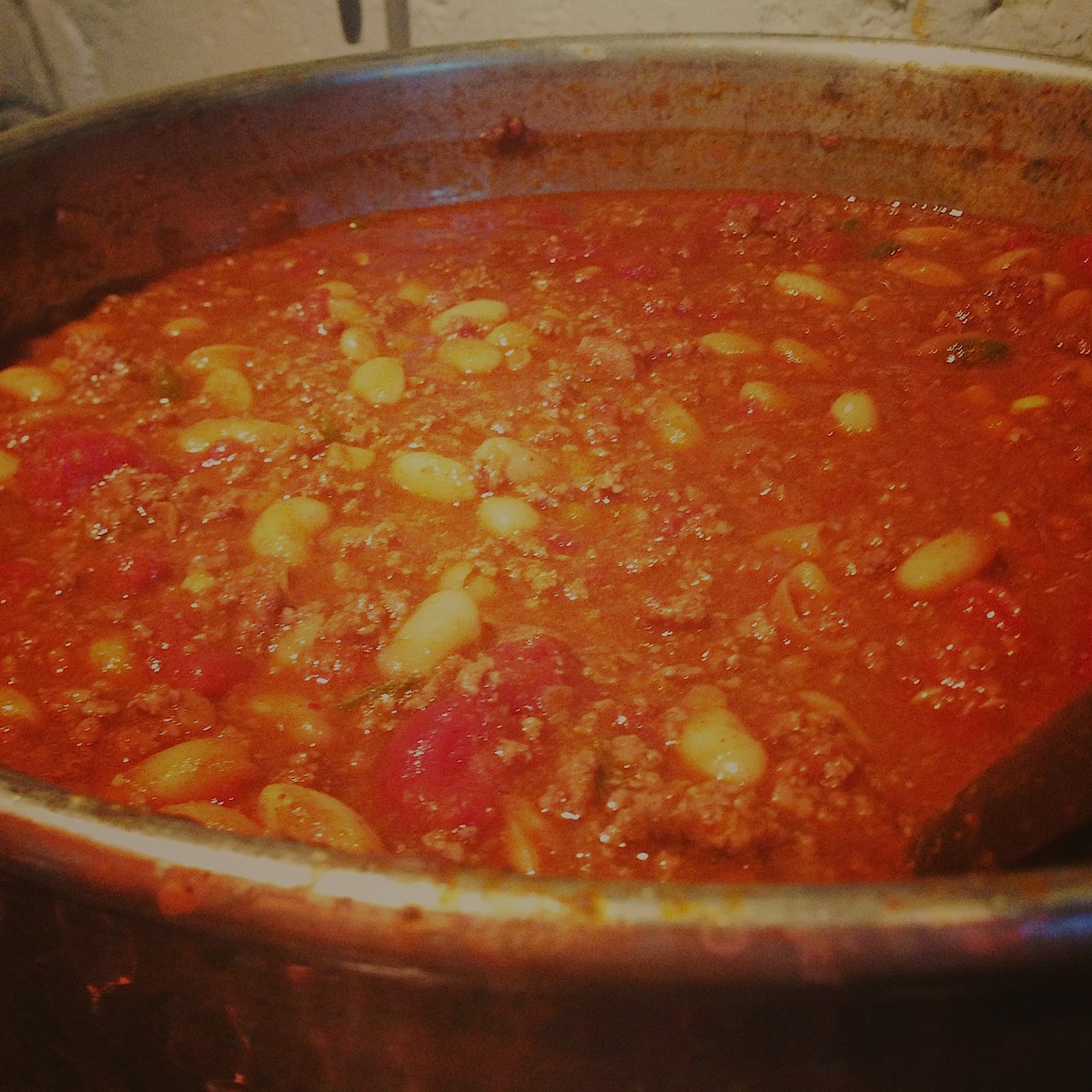The Local newsletter is your free, daily guide to life in Colorado. For locals, by locals.
It’s no shock that winter weather always brings me a renewed appreciation for soup. For those of us who love to cook, there is no better way to spend a cold day than making an oversize batch of chowder, bisque, or stock. I’ve whiled away many a snowy Sunday making a copper cauldron of winter white vegetable velouté, venison goulash, a piquant posole, porcini and chestnut purée, and wild game chili (pictured, with recipe below). So, why is it that prior to this gig—where it is my job to taste nearly all of a menu’s offerings—I rarely ordered soup in restaurants? I’m sure it was precisely because it’s an item that I often make at home. But, truth be told you can learn a lot about a chef from their soup.
During a tour of the Culinary Institute of America (CIA) in 2001 I’ll never forget our host’s first stop. She took us straight to the back of a classroom, to show us an enormous vat of simmering vegetable scraps. Soup is more than a prudent way to extend a restaurant’s (and a culinary school’s) bottom line, she explained: It is an imperative part of the cooking canon.

Ann Cooper, who is the director of food services for the Boulder Valley School District and who graduated from CIA Hyde Park in the late 1970s, remembers that an entire class was dedicated to soups and sauces. “We had to learn stocks and consommé and clear soups and puréed soups and thick soups,” she told me. For students just starting out, soup is a way of practicing a variety of techniques: knife skills, balance of flavor, seasoning, texture, color. “Take a classic consommé,” Eric Cimino, executive chef of Luca d’Italia and a graduate of the CIA at Greystone, says “that’s all about technique and your ability to clarify the consommé. I continue to use that skill for a variety of dishes.”
It’s not just Denver’s CIA grads who have such respect for soup. It was an imperative topic no matter where a chef trained. “[It was] absolutely a critical part of the curriculum, in basic skills class, food production, and in the restaurant,” Bistro Vendôme chef de cuisine Ben Davison echoed of his time at the Art Institute of Colorado. “Soup was never overlooked.” Beast & Bottle chef-owner Paul Reilly, one of the Front Range’s rare graduates of New York City’s French Culinary Institute (now known as the International Culinary Center), remembers that “there were whole weeks dedicated to soups.” Jorel Pierce, a Johnson & Wales Denver grad and the chef at Euclid Hall and the forthcoming Stoic & Genuine, says soup was one of the few places where a chef’s palate trumped a kitchen’s recipe. “The combination of technique and balance was best evidenced in soup classes where balance outweighed recipes—unlike in many other courses,” Pierce explains.
Root Down executive chef Jeremy Kittelson, who made French onion soup at Le Cordon Bleu College of Culinary Arts in Scottsdale more times than he can count perhaps summed up an insider’s love of soup best: “Soups are certainly one of the unsung heroes of the kitchen,” Kittelson says.
Whether I’m on or off the clock, speaking with these Denver chefs inspires me to give this humble menu item the glory it deserves—both at home and out and about.
Make It: For this Sunday’s big game, I’ll be serving a batch of wild game chili. For years I’ve been riffing on this recipe from Bon Appétit. Instead of the 2 1/3 pounds of ground beef they call for, I use a 1/2 pound of ground beef, 1 pound of ground bison, and 1 pound of ground venison, elk, or lamb. The beef and bison allow the third meat to shine instead of overwhelm. (It’s easier on the pocket book too.) Go Broncos!
Follow Stacey Brugeman on Facebook, Instagram, and Twitter @denveromnivore.








